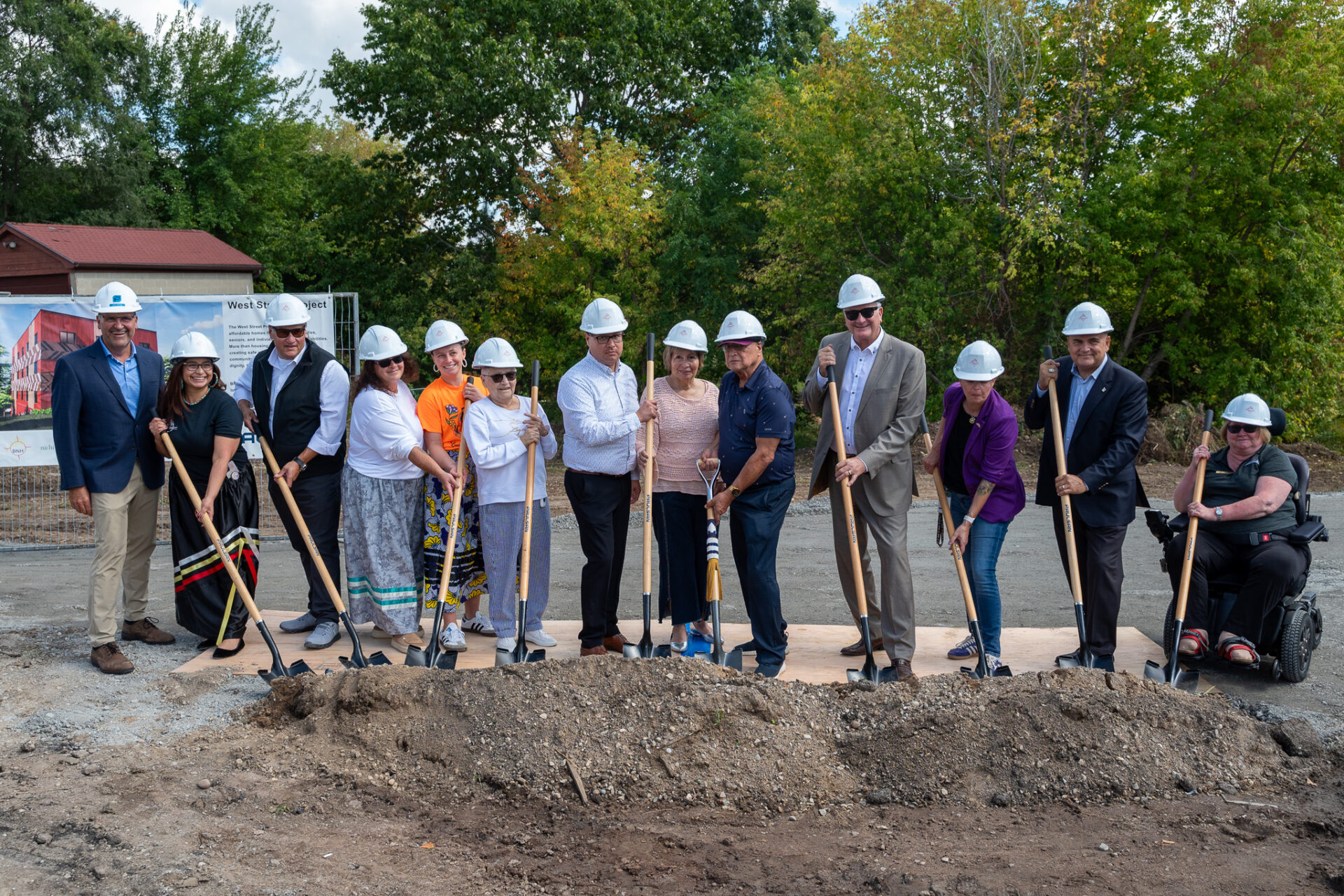Nearly 50 people attended Brantford Native Housing’s (BNH) groundbreaking ceremony for its new affordable housing development on Friday, September 26, 2025.
Once completed, the West Street project will provide a total of 18 affordable housing units designed for Indigenous families, seniors and individuals living with disabilities, all offered at below market rent. The development will include a mix of one- and two-bedroom apartments, office space, indoor and outdoor programming areas, as well as a green space and a traditional medicine garden.
Made possible by the support of the National Indigenous Collaborative Housing Incorporated (NICHI), which awarded $10-million for the build, and the Canada Mortgage and Housing Corporation (CMHC) through $5-million in co-investment funding, the building has been designed by Smoke Architecture, an all-Indigenous and women-led team, and is being built by Paulsan Construction Inc.
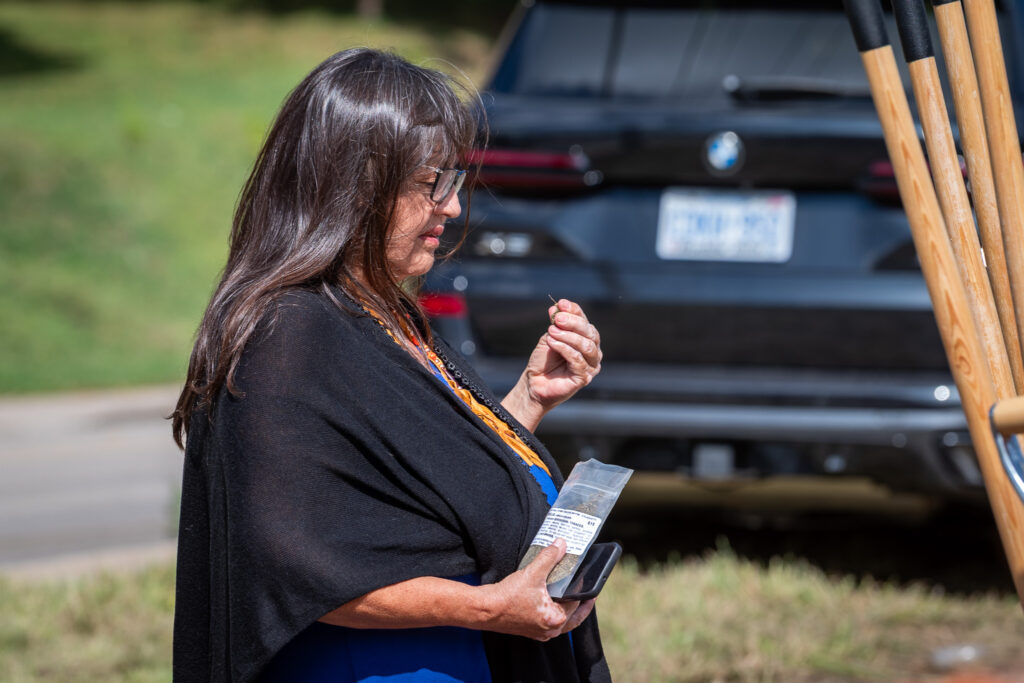
To open the event, Elder Gail Whitlow offered a blessing over the land, presenting both tobacco and black obsidian as part of the ceremony.
“One of the reasons we do a blessing is because the ancestors that walked before us are still walking among us, and so if they have an idea of what we’re doing, then the project will be much more successful,” she said. “…Sometimes people get disoriented when they move into a new place because they haven’t acknowledged that the spirits of the land walked there first and so this is kind of like a courtesy; just like we have courtesies in our human form, ancestors have courtesy calls too.”
Following an opening song from members of the Little Creek Singers, Shane Bomberry, vice-president of BNH’s board of directors, addressed the crowd, sharing why this particular project was so significant.
“The story of Indigenous people in Brantford has been marked by generations of pain, trauma and displacement. Brantford Native Housing itself was born out of that very history; out of the need to bring healing and dignity back to our people. When we purchased this land, we thought the path forward would be simple but this land had a deeper story to tell,” said Bomberry. “The archeological discoveries here remind us that our ancestors once traveled, gathered, celebrated, created tools and shared stories on this very ground. Despite the challenges those discoveries brought to the project, they also spoke a powerful truth: that our people are returning to the land. …Housing for our people means cultural security. It means children will grow up in a safe and stable community. It means that out of trauma, we are choosing healing, out of displacement, we are choosing home. Today, we break ground not only on a building, but on a future of dignity, belonging and reconciliation.”
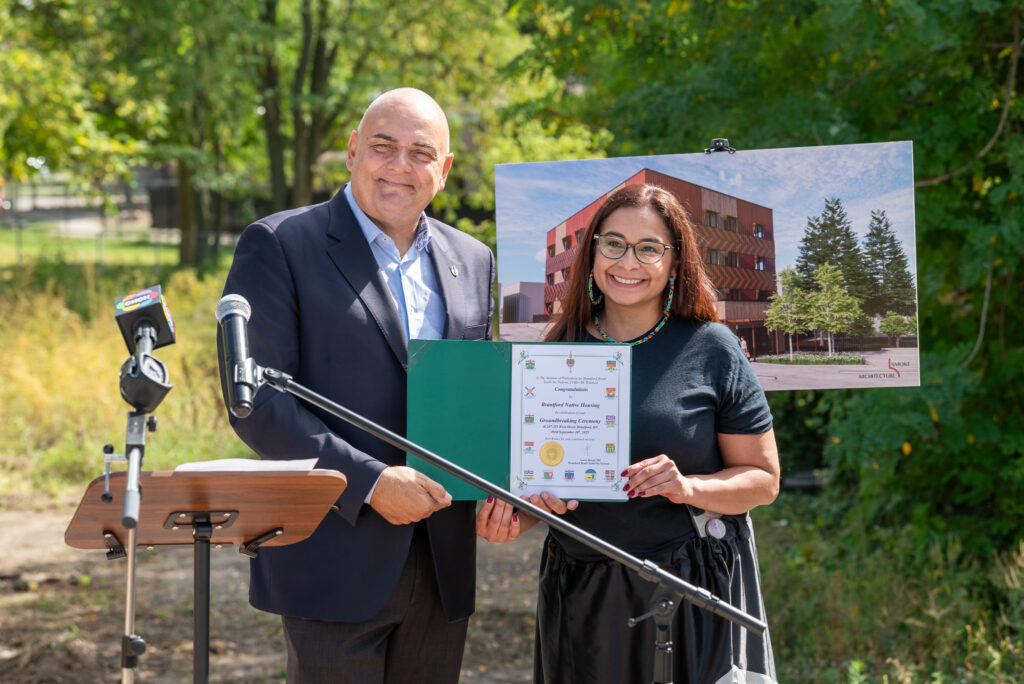
After a few words from Mary Musson, the City’s Commissioner of Community Services and Social Development, Mayor Kevin Davis, said that given the history of First Nations communities in Brantford, the City is trying to make earnest strides in true reconciliation.
“Reconciliation that goes beyond words, and reconciliation that establishes the groundwork and basis for a great future where we march together, benefiting everyone in our community. …The City has actually contributed about $1,100,000 towards [this] construction, we’ve waived about $50,000 in permitting and development fees, and we’re also entering into rent supplement agreements for ten of these units. That is, I think, an excellent example of how we’re turning the chapter, building a new relationship, and providing housing for all the members of our community.”
Later, John Gordon, NICHI’s Chief Executive Director, said that the project is a testament to the power of collaboration and a for Indigenous, by Indigenous approach.
“I want to take a moment to acknowledge the leadership of Brantford Native Housing,” said Gordon. “For decades, you’ve been on the front lines advocating for building and supporting Indigenous families in need of safe, affordable homes, and NICHI is proud to have collaborated with you on this initiative, and also in the past. The Brantford Street West Project demonstrates what can happen when Indigenous led solutions are supported and trusted.”
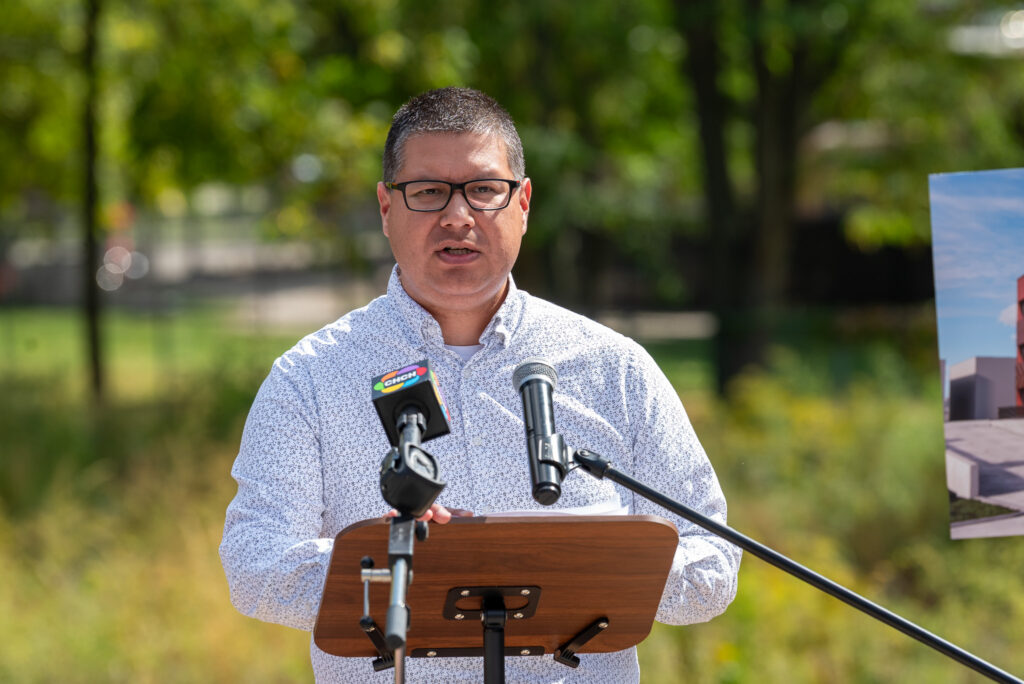
Alma Arguello, Executive Director of BNH, later thanked every one who has been, and will continue to be involved in the project, noting that the build will be a reflection of what Truth and Reconciliation looks like.
“As we gather today, we recognize that reconciliation is not a slogan, but rather an action. It is about allies stepping forward when we need them the most. It is about government and funders listening and responding to the voices of Indigenous people. It’s about communities showing up as it’s about the project like this one, where housing itself becomes an act of healing and justice,” said Arguello. “This build is what Truth and Reconciliation looks like in action, allies and Indigenous leaders walking side by side, creating homes that embody dignity, respect, belonging and cultural safety. So today, we break ground, not just on a building, but on a legacy; a legacy of resilience, of reclamation and reconciliation. Together, we are building more than housing…we’re building hope, we’re building healing, and we’re building a future where Indigenous families can thrive.”
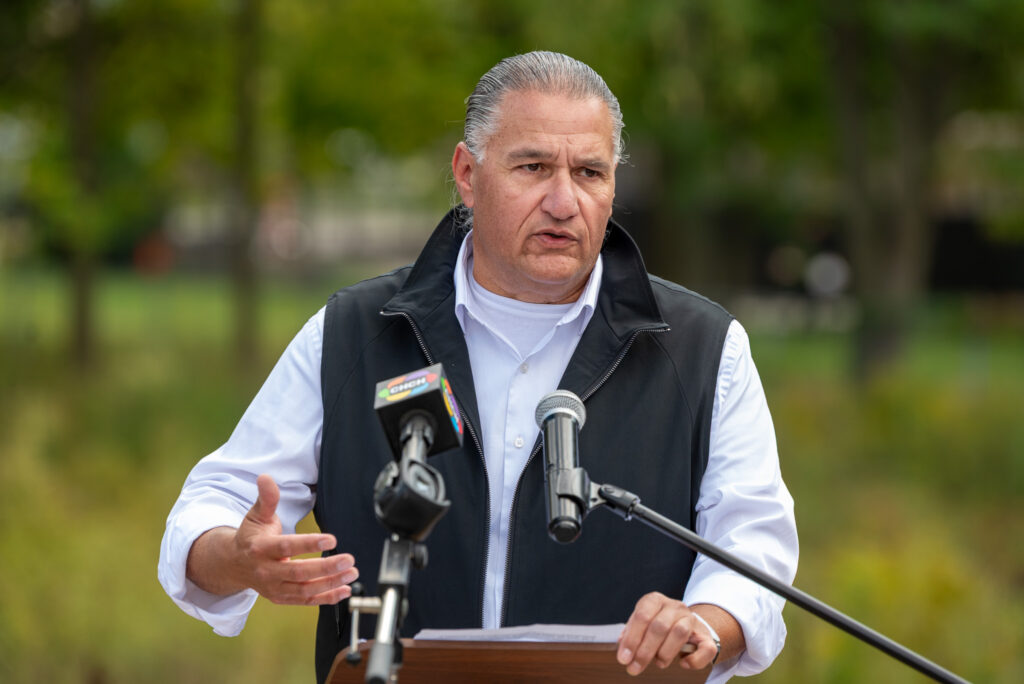
Kimberly De Jong’s reporting is funded by the Canadian government through its Local Journalism Initiative.The funding allows her to report rural and agricultural stories from Blandford-Blenheim and Brant County. Reach her at kimberly.dejong@brantbeacon.ca.
